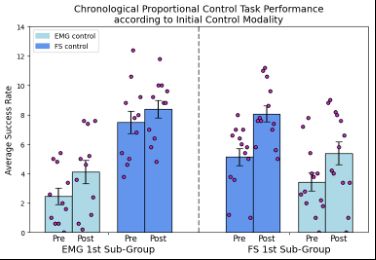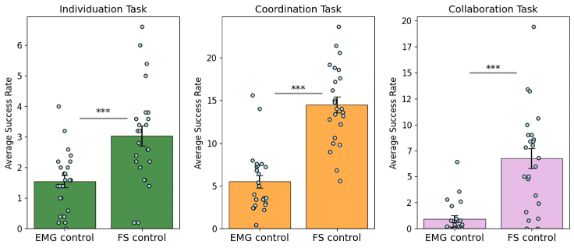
– Force control offers better early motor performance
– EMG fosters learning generalization
– Raw EMG contains hidden potential
Read the full preprint at doi.org/10.1101/2025.06.16.658246. Thanks to all co-authors and participants!
12/12
– Force control offers better early motor performance
– EMG fosters learning generalization
– Raw EMG contains hidden potential
Read the full preprint at doi.org/10.1101/2025.06.16.658246. Thanks to all co-authors and participants!
12/12
EMG control may be harder initially, but it offers a richer signal and better transfer of learning. With optimised hardware and software, it could be a powerful interface for future augmentation device control.
11/12
EMG control may be harder initially, but it offers a richer signal and better transfer of learning. With optimised hardware and software, it could be a powerful interface for future augmentation device control.
11/12
10/12

10/12
But importantly, the raw EMG signal could act as a predictor. This suggests pre-processing might discard important information.
9/12
But importantly, the raw EMG signal could act as a predictor. This suggests pre-processing might discard important information.
9/12
8/12

8/12
Beginning with EMG control led to superior transfer when switching to force control – suggesting muscle control is a better tutor for generalisable learning.
7/12

Beginning with EMG control led to superior transfer when switching to force control – suggesting muscle control is a better tutor for generalisable learning.
7/12
6/12

6/12
5/12

5/12
4/12

4/12
We compared both control modalities across multiple motor tasks using a counterbalanced within-participants design.
3/12

We compared both control modalities across multiple motor tasks using a counterbalanced within-participants design.
3/12
But what if we tapped into muscle signals directly instead?
2/12

But what if we tapped into muscle signals directly instead?
2/12

